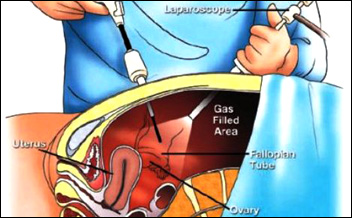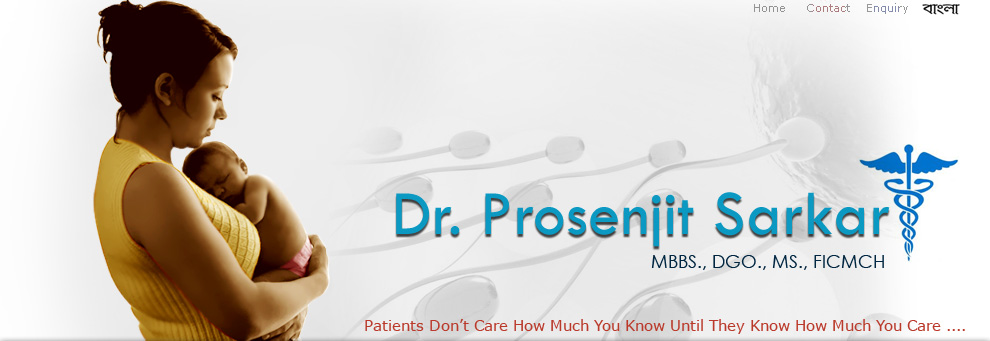
SURGERY? BUT NO CUTS!
Sangita was having pain and excessive bleeding during her menstrual periods. An USG revealed a bulky uterus. Her family gynaecologist advised, removal of the uterus. But she was terrified, of the pain and horrible scar of a big 'open' cut and stitches on the abdomen and thereafter the compulsory rest for a long time! Her friend Sweta, took her to a laparoscopic specialist.He assured her that by amazing latest and modern procedures, there is no need for an 'open' cut on the abdomen in order to remove the uterus! Sangita couldn't believe her ears. She was so relieved, so happy. She decided to go for Laparoscopic treatment, also called 'Key hole' and 'minimally invasive' surgery.
The advantages of the procedure are:
- Better cosmetic value with tiny 0.5-1 cm holes.
- Minimal post operative discomfort.
- Lower risk of post operative infection.
- Less blood loss during surgery.
- Lower risk of intrabdominal adhesion.
- No risk of post operative hernia.
- Short hospital stay for 1-3 days only.
- Quick recovery and normal activities in 1-2 weeks only. So, recovery from surgery is complete within a short vacation from work or studies.
- Costs similar to 'open' surgery, very affordable.
 Laparoscopic surgery has replaced old-world 'open' surgery in the treatment of: Laparoscopic surgery has replaced old-world 'open' surgery in the treatment of:
1. Chronic lower abdominal pain.
2. Fibroid tumours in uterus.
3. Bulky/Enlarged uterus causing excessive bleeding and pain during menstruation.
4. Ovarian cysts.
5. Ovarian chocolate cysts and pelvic endometriosis.
6. Ectopic pregnancy.
7. Infertility due to pelvic adhesions, polycystic ovaries or Fallopian tubal blockage.
Under General Anaesthesia, a thin tube is introduced through a tiny incision in the abdomen, though which the laparoscope is inserted. Then, with the help of a small video camera and a light source connected to it, the surgeon can actually sds. the inside Under General Anaesthesia, a thin tube is introduced through a tiny incision in the abdomen, though which the laparoscope is inserted. Then, with the help of a small video camera and a light source connected to it, the surgeon can actually sds. the inside morning.
So, successful pregnancies result from correction of blocked Fallopian tubes and polycystic ovaries; uterus, tumours and ovarian cysts are removed with no big abdominal scar and minimal discomfort; patients are discharged in 1-3 days and resume usual work in 2-3 weeks. Thus, major surgeries too have become convenient and much less stressful, at affordable cost for the patients.
|


 Laparoscopic surgery has replaced old-world 'open' surgery in the treatment of:
Laparoscopic surgery has replaced old-world 'open' surgery in the treatment of: